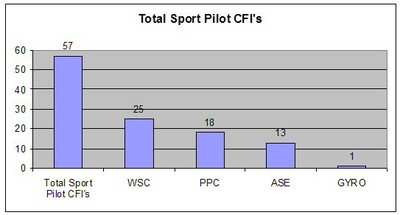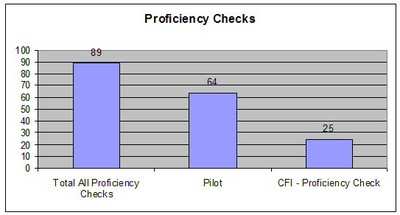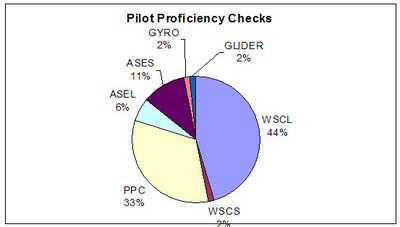By ANN Correspondent John Ballantyne
Well, here it is again -- years end. Only one year ago FAA had
just issued a final rule establishing sport pilot, but had little
of the infrastructure to get it working.
There were virtually no instructors nor pilot examiners. There
was no way to change fat-ultralights into light sport aircraft (for
operation by sport pilots). There was not even an application form
for new sport pilot applicants.
During 2005 FAA proceeded to really pump out the "rolling"
implementation plan. The plan included the complete system for
creating sport pilots, instructors and examiners plus conversion of
ultralight vehicles into experimental light-sport aircraft and the
emergence of special-light sport aircraft (factory-built, turn key
ready to fly aircraft).
2005 Accomplishments
Early in the year FAA released the sport pilot application form
(8710-11), and began to train and certificate sport pilot
examiners. The new examiners wasted no time in beginning to examine
and certificate new sport pilot instructors, most of whom were
transitioning ultralight instructors. Alongside incoming new pilots
was the ability to “Transition” existing FAA pilots
from one aircraft category to another (i.e. airplane to powered
parachute).
By mid-year FAA had authorized a few Designated Airworthiness
Representatives (DAR) to issue experimental light-sport aircraft
(E-LSA) airworthiness certificates thus beginning the transition of
fat and two-seat ultralights “into the system.” By late
summer FAA had also implemented the airworthiness standards for
factory built, ready-to-fly special light-sport aircraft
(S-LSA).
Martin Weaver, Manager, Light Sport Branch of FAA, retired
during the fall. Temporarily accepting the Branch Manager position
until FAA can appoint a permanent branch manager, is Larry Clymer
who remains manager through the 2006 New Year celebrations.
2005 Statistics
On December 17, 2005 the number of Designated Pilot Examiners
(DPE) who administer the practical tests (oral and flight) are as
follows:
Airplane = 122
Glider = 15
Gyroplane = 4
Powered Parachute = 9
Weight shift control (Trikes) = 10
FAA Clymer was kind enough to provide the following FAA sport
pilot/instructor/examiner statistics during an exclusive ANN
interview.






Refresher: Sport Pilot -- What and
Why
Effective September 1, 2004-Sport Pilot and Light Sport
Aircraft.
The FAA has created regulation for the certification, operation,
maintenance, and manufacture of light-sport aircraft. Light-sport
aircraft are often heavier and faster than ultralights and include
airplanes, gliders, balloons, powered parachutes,
weight-shift-control aircraft, and gyroplanes. This action was
necessary to address advances in sport and recreational aviation
technology, gaps in the existing regulations, and several petitions
for rulemaking and for exemptions from existing regulations. The
intended effect of this action is to provide for the manufacture of
safe and economical aircraft and to allow operation of these
aircraft by the public in a safe manner.
Included in the rule is the establishment of new airman
certificates for Sport Pilot at levels of student, pilot,
instructor and examiner. These pilots may operate light-sport
aircraft which are simple, low-performance aircraft that are
limited to 1,232 lbs. (560 kg) maximum weight, two occupants, a
single non-turbine powered engine, stall speed of 39 knots, maximum
airspeed of 115 knots, and fixed landing gear. Aircraft categories
include airplanes, weight-shift-control aircraft (trikes), powered
parachutes, gyroplanes, gliders, balloons and airships. Due to
their complexity, helicopters and powered-lifts are not covered by
the proposed rule.
The rule became effective on September 1, 2004 creating much
celebration by individuals, companies and member associations.
Release of the regulation began a series of FAA actions to
implement Sport Pilot including specific guidance, policy, and
infrastructure necessary for the public to conduct operations and
seek certification under the new regulations.
 ANN's Daily Aero-Term (04.26.24): DETRESFA (Distress Phrase)
ANN's Daily Aero-Term (04.26.24): DETRESFA (Distress Phrase) ANN's Daily Aero-Linx (04.26.24)
ANN's Daily Aero-Linx (04.26.24) Airborne 04.22.24: Rotor X Worsens, Airport Fees 4 FNB?, USMC Drone Pilot
Airborne 04.22.24: Rotor X Worsens, Airport Fees 4 FNB?, USMC Drone Pilot Airborne 04.24.24: INTEGRAL E, Elixir USA, M700 RVSM
Airborne 04.24.24: INTEGRAL E, Elixir USA, M700 RVSM Airborne-NextGen 04.23.24: UAVOS UVH 170, magni650 Engine, World eVTOL Directory
Airborne-NextGen 04.23.24: UAVOS UVH 170, magni650 Engine, World eVTOL Directory








